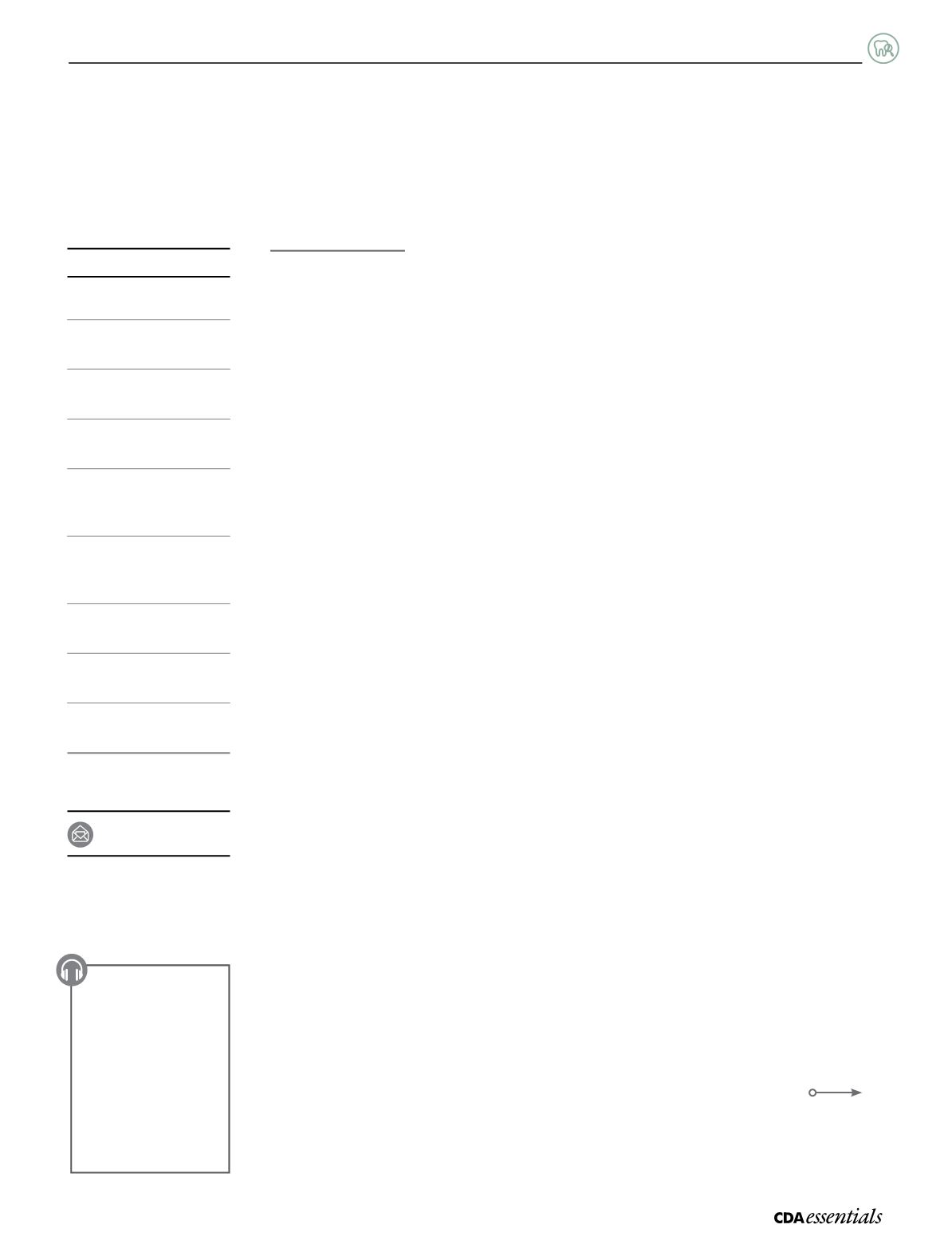

35
Volume 2 Issue 2
|
S
upporting
Y
our
P
ractice
In late 2013, a focus group met to participate in the Orofacial Pain Team
Workshop, held in Montreal, Canada, where the issue of appropriate opioid
analgesic prescribing for pain by Canadian dentists was discussed. There was
agreement that the use of opioid analgesics by dentists for either acute or
chronic orofacial pain conditions has not been investigated satisfactorily in
this country.
A number of questions related to the use of opioid analgesics by dentists were raised by
the focus group: How well do dentists manage post-operative pain? How often do patients
report inadequate analgesia after dental surgery? How often are opioid analgesics prescribed
and for which procedures? Do dentists overprescribe? Do they instruct their patients about
the risks related to leftover doses? Do dentists monitor the use of opioid analgesics by their
patients and, if so, how does monitoring vary in urban compared to rural areas? Is opioid use
different in underserved populations? What are the risk factors for problematic use? What is
the current level of knowledge about the use of opioid analgesics in populations thought to
be more vulnerable to misuse or abuse?
Opioid analgesic prescribing for acute dental pain
The existing literature suggests that the use of opioid analgesics for acute procedural pain
varies significantly in different countries. In the UK in 2001, of all prescriptions for analgesics
written by dentists, the most commonly prescribed analgesic was ibuprofen, representing
73% of prescriptions. The only commonly prescribed opioid analgesic was codeine, which
represented only 19% of prescriptions.
1
One of the most studied acute surgical procedures
in dentistry is third molar extraction. Meta-analyses indicate that NSAIDs, like ibuprofen, show
the best evidence for efficacy for pain post-extraction (roughly 80% of patients given 600 mg
ibuprofen had > 50% pain relief), consistent with the use of ibuprofen by UK dentists.
1,2
Use of
codeine (60 mg) with acetaminophen (650 mg) is less likely to produce significant pain relief
post-extraction, and is associated with a much greater incidence of adverse effects.
1
In contrast to the modest prescribing rate of opioid analgesics by UK dentists, in the US,
12% of all immediate release opioid analgesic prescriptions are written by dentists (just
slightly less than family physicians).
3
An American Dental Association survey from 2006
suggested that while a majority of oral and maxillofacial surgeons (74%) preferred patients
to use ibuprofen after third molar extraction, 85% also prescribed an opioid analgesic post-
procedure (most commonly hydrocodone or oxycodone).
3
Prescribing patterns after oral
surgical or endodontic treatments at a dental clinic at the University of Alabama indicated
about 80% of patients received a prescription for an opioid analgesic (most commonly
THE AUTHORS
Brian E. Cairns
PhD, ACPR
Arlette Kolta
PhD
EliWhitney
DDS, FRCD(C)
Ken Craig
PhD
Nathalie Rei
DMD, MSD, Cert.
médecine buccale
David K. Lam
MD, DDS, PhD,
FRCD(C), DABOMS
Mary Lynch
MD, FRCPC
Barry Sessle
MDS, PhD, DSc(hc)
Gilles Lavigne
DMD, MSc, PhD
brcairns@mail.ubc.caDr. Cairns and Kolta
were part of a
CE session on opioids
and the management
of orofacial pain
at the Pacific Dental
Conference in
March 2015.
oasisdiscussions.ca/2015/02/06/ncohr-3
















